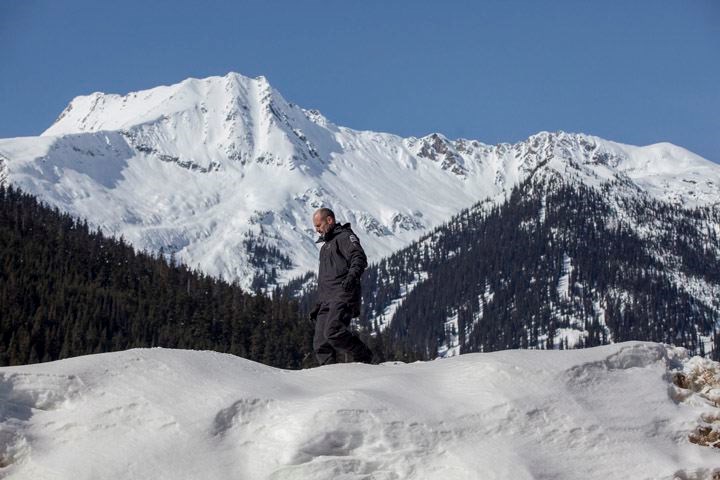Recreational snowmobilers and others seeking some fun in the backcountry aren't the only ones who could be exposing themselves to avalanche danger.
Anyone employed in vocations that take them outside can also find themselves in the same situation, according to WorkSafeBC, which launched an awareness campaign this week aimed at workers with jobs out in the bush.
"We often think about ski hills and outdoor adventure pursuits when we think about avalanches," said WorkSafeBC forest industry specialist Carole Savage. "But as far as the workers go, think about primary industries - forest harvesting, oil and gas, road construction, surveying, natural resource data collection."
Since 1998, three workers have been killed in avalanches, and they've resulted in 47 accepted time-loss injury claims. One of those deaths, in which a land surveyor was the victim, occurred in 2012 in the Bulkley-Nechako region west of Prince George.
A WorkSafeBC Occupational Health and Safety Regulation requires employers whose workers travel through or work near or inside an avalanche hazard zone to have a qualified person conduct a risk assessment and have avalanche safety plans in place.
Given the circumstances, they can also get workers trained in safe procedures as an alternative.
A safety plan doesn't have to be complicated, according to Savage. It can be as basic as simply avoiding high-risk areas during the avalanche season.
"If the slope is of sufficient steepness to slide and there is sufficient snow depth and the right weather conditions, you could have an avalanche problem," Savage said. "You need terrain, snowpack and weather in certain combinations."
Nonetheless, teaching and working with employers and workers on avoiding tragedy keeps Rod Gee of Terrace-based Northwest Avalanche Solutions Ltd. busy.
The member of the Canadian Avalanche Association with more than 30 years experience has worked with everyone from CN Rail, BC Hydro and Rio Tinto Alcan to mining operations and logging outfits and has clients across Western Canada.
"It's type of risk management and it's good that it's formally recognized as a requirement," Gee said.
And as resource industries in particular go further afield, their risk of trouble can increase.
"A lot of the forestry operations are having to go further and further up the valleys because the easier stuff to get at has been harvested," Gee said. "It's getting to be more of a challenge but we're also able to work with them and make sure they're operating safety."
That tide will turn once second growth has filled in, he added.
It was coincidental, but also fortuitous, that WorkSafeBC initiated the campaign just days after five snowmobilers from Alberta were killed in an avalanche near McBride, in turn just six days after Prince George resident Kenny Carpino died in one in the Torpy Mountain area.
"The avalanche is not going to differentiate between a worker and a recreationalist," Savage said. "And when you think about the industry that's going on in some of these more remote areas with avalanche terrain, it's really timely because we want everybody to go home safe."



